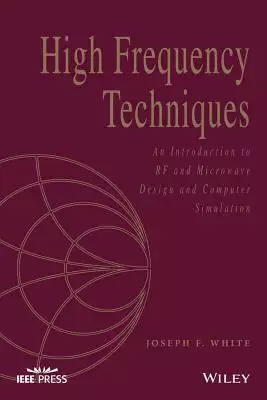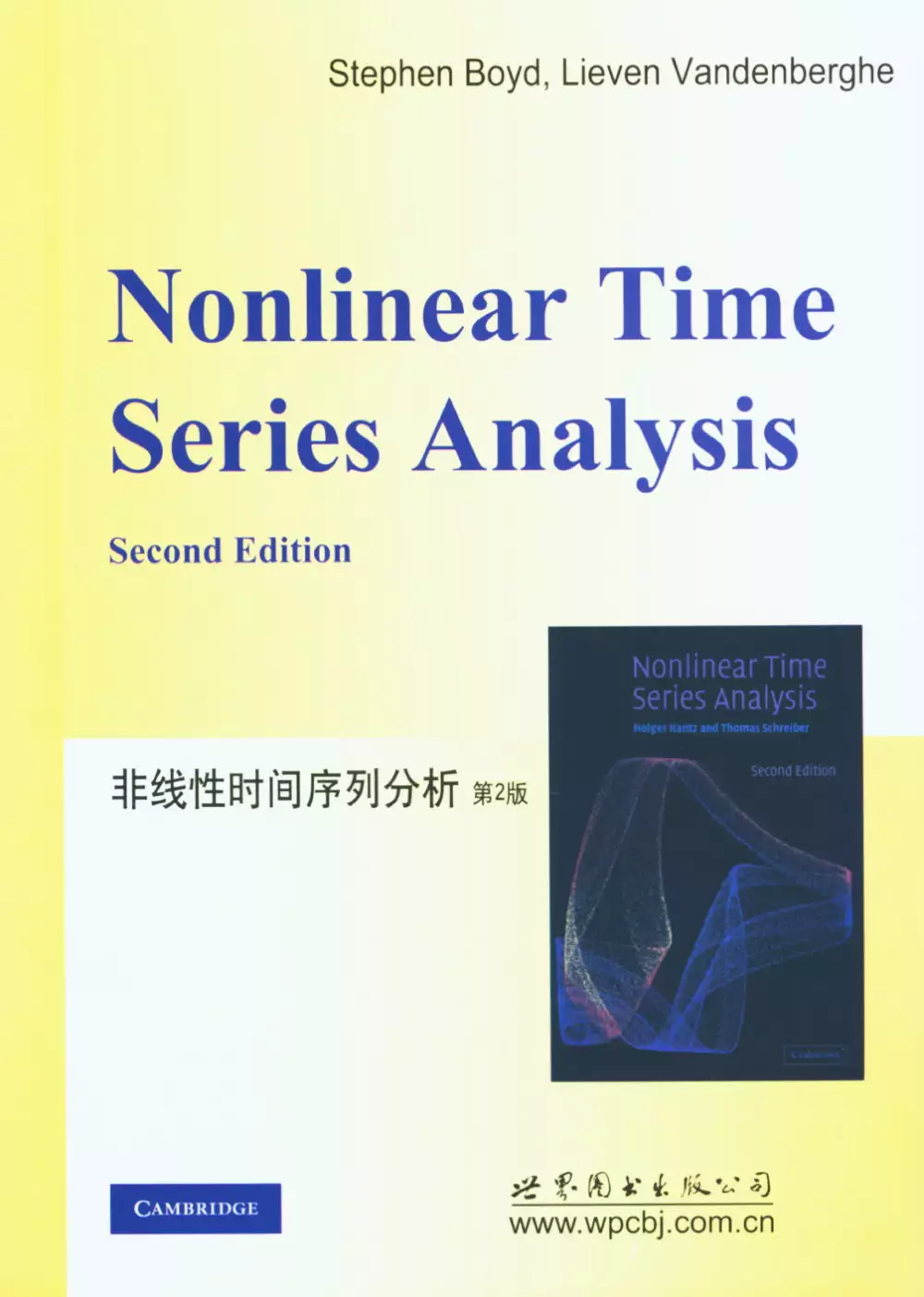constant frequency s的問題,透過圖書和論文來找解法和答案更準確安心。 我們找到下列包括價格和評價等資訊懶人包
constant frequency s的問題,我們搜遍了碩博士論文和台灣出版的書籍,推薦White, Joseph F.寫的 High Frequency Techniques: An Introduction to RF and Microwave Design and Computer Simulation 和(德)坎茲的 非線性時間序列分析:第2版都 可以從中找到所需的評價。
這兩本書分別來自 和世界圖書北京公司所出版 。
明新科技大學 電機工程系碩士班 蘇信銘所指導 黃禎岳的 無橋式功因修正轉換器研製 (2021),提出constant frequency s關鍵因素是什麼,來自於功率因數修正器、平均電流控制法、圖騰柱型功率因數修正器。
而第二篇論文國立陽明交通大學 材料科學與工程學系所 曾俊元、黃爾文所指導 古安銘的 異質元素摻雜還原氧化石墨烯電極於儲能裝置之應用研究 (2021),提出因為有 氧化石墨、還原氧化石墨、摻雜鈷的石墨、比電容(單位電容)、超級電容器、能量和功率密度的重點而找出了 constant frequency s的解答。
除了constant frequency s,大家也想知道這些:
High Frequency Techniques: An Introduction to RF and Microwave Design and Computer Simulation

為了解決constant frequency s 的問題,作者White, Joseph F. 這樣論述:
This textbook is an introduction to microwave engineering. The scope of this book extends from topics for a first course in electrical engineering, in which impedances are analyzed using complex numbers, through the introduction of transmission lines that are analyzed using the Smith Chart, and o
n to graduate level subjects, such as equivalent circuits for obstacles in hollow waveguides, analyzed using Green's Functions. This book is a virtual encyclopedia of circuit design methods.Despite the complexity, topics are presented in a conversational manner for ease of comprehension. The book is
not only an excellent text at the undergraduate and graduate levels, but is as well a detailed reference for the practicing engineer.Consider how well informed an engineer will be who has become familiar with these topics as treated in High Frequency Techniques (in order of presentation) Brief hist
ory of wireless (radio) and the Morse code U.S. Radio Frequency Allocations Introduction to vectors AC analysis and why complex numbers and impedance are used Circuit and antenna reciprocity Decibel measure Maximum power transfer Skin effect Computer simulation and optimization of networks LC matchi
ng of one impedance to another Coupled Resonators Uniform transmission lines for propagation VSWR, return Loss and mismatch error The Telegrapher Equations (derived) Phase and Group Velocities The Impedance Transformation Equation for lines (derived) Fano's and Bode's matching limits The Smith Chart
(derived) Slotted Line impedance measurement Constant Q circles on the Smith Chart Approximating a transmission line with lumped L's and C's ABCD, Z, Y and Scattering matrix analysis methods for circuits Statistical Design and Yield Analysis of products Electromagnetic Fields Gauss's Law Vector Dot
Product, Divergence and Curl Static Potential and Gradient Ampere's Law and Vector Curl Maxwell's Equations and their visualization The Laplacian Rectangular, cylindrical and spherical coordinates Skin Effect The Wave Equation The Helmholtz Equations Plane Propagating Waves Rayleigh Fading Circular
(elliptic) Polarization Poynting's Theorem EM fields on Transmission Lines Calculating the impedance of coaxial lines Calculating and visualizing the fields in waveguides Propagation constants and waveguide modes The Taylor Series Expansion Fourier Series and Green's Functions Higher order modes an
d how to suppress them Vector Potential and Retarded Potentials Wire and aperture antennas Radio propagation and path loss Electromagnetic computer simulation of structures Directional couplers The Rat Race Hybrid Even and Odd Mode Analysis applied to the backward wave coupler Network analyzer imped
ance and transmission measurements Two-port Scattering Parameters (s matrix) The Hybrid Ring coupler The Wilkinson power divider Filter design: Butterworth, Maximally flat & Tchebyscheff responses Filter Q Diplexer, Bandpass and Elliptic filters Richard's Transformation & Kuroda's Identities
Mumford's transmission line stub filters Transistor Amplifier Design: gain, biasing, stability, and conjugate matching Noise in systems, noise figure of an amplifier cascade Amplifier non-linearity, and spurious free dynamic range Statistical Design and Yield Analysis
無橋式功因修正轉換器研製
為了解決constant frequency s 的問題,作者黃禎岳 這樣論述:
本論文目的在研製一無橋式功因修正轉換器,硬體電路以圖騰柱型功率因數修正電路為核心,利用外迴路電壓感測電路與內迴路電流感測電路完成本控制。本研究採用平均電流控制法來實現功率因數修正功能。平均電流控制法以雙迴圈PI控制器來實現,由輸入電壓極性與波形角度傳給雙迴圈PI控制系統運算,外迴圈PI控制器控制電壓,內迴圈PI控制器控制電流,軟體是以瑞薩電子公司生產的R5F562TAADFP數位訊號處理器實現,經實測結果顯示功率因數可達0.98以上,總諧波失真率最大為11.644%。證明本控制器可達功率因數修正的效果。
非線性時間序列分析:第2版

為了解決constant frequency s 的問題,作者(德)坎茲 這樣論述:
本書旨在以動力系統理論為基礎,闡述時間序列分析的現代方法。這部修訂版,增加了一些新的章節,對原版進行了大量的修訂和擴充。從潛在的理論出發,到實際應用話題,並用眾多 •領域收集來的大量經驗數據解釋這些實用話題。本書對研究時間變量信號的各個領域包括地球、生命科學科學家和工程人員都十分有用。Holger Kantz(H.坎茲,德國)是國際知名學者,在數學和物理學界享有盛譽。本書凝聚了作者多年科研和教學成果,適用於科研工作者、高校教師和研究生。 Preface to the first editionPreface to the second editionAcknowledgem
entsⅠ Basictopics1 Introduction: why nonlinear methods?2 Linear tools and general considerations2.1 Stationarity and sampling2.2 Testing for stationarity2.3 Linear correlations and the power spectrum2.3.1 Stationarity and the low—frequency component in the power spectrum2.4 Linear filters2.5 Linearp
redictions3 Phase space methods3.1 Determinism: uniqueness in phase space3.2 Delayreconstruction3.3 Finding a good embedding3.3.1 False neighbours3.3.2 The time lag3.4 Visual inspection of data3.5 Poincare surface of section3.6 Recurrenceplots4 Determinism and predictability4.1 Sources of predictabi
lity4.2 Simple nonlinear prediction algorithm4.3 Verification ofsuccessful prediction4.4 Cross—prediction errors: probing stationarity4.5 Simple nonlinear noise reduction5 Instability: Lyapunov exponents5.1 Sensitive dependence on initial conditions5.2 Exponentialdivergence5.3 Measuring the maximale
xponent from data6 Self—similarity:dimensions6.1 Attractor geometry and fractals6.2 Correlationdimension6.3 Correlation sum from a time series6.4 Interpretation and pitfalls6.5 Temporalcorrelations, non—stationarity, and space time separation plots6.6 Practicalconsiderations6.7 A useful application:
determination of the noise level using the correlation integral6.8 Multi—scale or self—similar signals6.8.1 Scalinglaws6.8.2 Detrended fluctuation analysis7 Using nonlinear methods when determinismis weak7.1 Testing for nonlinearity with surrogate data7.1.1 The null hypothesis7.1.2 How to make surr
ogate data sets7.1.3 Which statistics to use7.1.4 What can go wrong7.1.5 What we havelearned7.2 Nonlinear statistics for system discrimination7.3 Extracting qualitative information from a time series8 Selected nonlinear phenomena8.1 Robustness and limit cycles8.2 Coexistence of attractors8.3 Transie
nts8.4 Intermittency8.5 Structural stabilitY8.6 Bifurcations8.7 Quasi—periodicityⅡ Advancedtopics9 Advanced embedding methods9.1 Embedding theorems9.1.1 Whitney’’s embedding theorem9.1.2 Takens’’s delay embedding theorem9.2 The time lag9.3 Filtered delay embeddings9.3.1 Derivative coordinates9.3.2 P
rincipal component analysis9.4 Fluctuating time intervals9.5 Multichannel measurements9.5.1 Equivalent variables at different positions9.5.2 Variables with different physical meanings9.5.3 Distributed systems9.6 Embedding of interspike intervals9.7 High dimensional chaos and the limitations of the t
ime delay embedding9.8 Embedding for systems with time delayed feedback10 Chaotic data and noise10.1 Measurement noise and dynamical noise10.2 Effects of noise10.3 Nonlinear noise reduction10.3.1 Noise reduction by gradient descent10.3.2 Local projective noise reduction10.3.3 Implementation oflocall
y projective noise reduction10.3.4 How much noise.is taken out?10.3.5 Consistencytests10.4 An application: foetal ECG extraction11 More aboutinvariant quantities11.1 Ergodicity and strange attractors11.2 Lyapunov exponents Ⅱ11.2.1 The spectrum of Lyapunov exponents and invariant manifolds11.2.2 Flow
s versus maps11.2.3 Tangent space method11.2.4 Spuriousexponents11.2.5 Almost two dimensional flows11.3 Dimensions Ⅱ11.3.1 Generalised dimensions, multi—fractals11.3.2 Information dimension from a time series11.4 Entropies11.4.1 Chaos and the flow ofinformation11.4.2 Entropies of a static distributi
on11.4.3 The Kolmogorov—Sinai entropy11.4.4 The e—entropy per unit time11.4.5 Entropies from time series data11.5 How things are related11.5.1 Pesin’’sidentity11.5.2 Kaplan—Yorkeconjecture12 Modelling and forecasting12.1 Linear stochastic models and filters12.1.1 Linear filters12.1.2 Nonlinear filte
rs12.2 Deterministicdynamics12.3 Local methods in phase space12.3.1 Almost model free methods12.3.2 Local linear fits12.4 Global nonlinear models12.4.1 Polynomials12.4.2 Radial basis functions12.4.3 Neuralnetworks12.4.4 What to do in practice12.5 Improved cost functions12.5.1 Overfitting and modelco
sts12.5.2 The errors—in—variables problem12.5.3 Modelling versus prediction12.6 Model verification12.7 Nonlinear stochastic processes from data12.7.1 Fokker—Planck equations from data12.7.2 Markov chains in embedding space12.7.3 No embedding theorem for Markov chains12.7.4 Predictions for Markov cha
in data12.7.5 Modelling Markov chain data12.7.6 Choosing embedding parameters for Markov chains12.7.7 Application: prediction of surface wind velocities12.8 Predicting prediction errors12.8.1 Predictabilitymap12.8.2 Individual error prediction12.9 Multi—step predictions versus iterated one—step pred
ictions13 Non—stationary signals13.1 Detecting non—stationarity13.1.1 Making non—stationary data stationary13.2 Over—embedding13.2.1 Deterministic systems with parameter drift13.2.2 Markov chain with parameter drift13.2.3 Data analysis in over—embedding spaces13.2.4 Application: noise reduction for
human voice13.3 Parameter spaces from data14 Coupling and synchronisation of nonlinear systems14.1 Measures for interdependence14.2 Transfer entropy14.3 Synchronisation15 Chaos control15.1 Unstable periodic orbits and their invariant manifolds15.1.1 Locating periodic orbits15.1.2 Stable/unstable man
ifolds from data15.2 OGY—control and derivates15.3 Variants of OGY—control15.4 Delayed feedback15.5 Tracking15.6 RelatedaspectsA Using the TISEAN programsA.1 Information relevant to most of the routinesA.1.1 Efficient neighbour searchingA.1.2 Re—occurring command optionsA.2 Second—order statistics a
nd linear modelsA.3 Phase space toolsA.4 Prediction and modellingA.4.1 Locally constant predictorA.4.2 Locally linear predictionA.4.3 Global nonlinear modelsA.5 Lyapunov exponentsA.6 Dimensions and entropiesA.6.1 The correlation sumA.6.2 Information dimension, fixed mass algorithmA.6.3 EntropiesA.7
Surrogate data and test statisticsA.8 Noise reductionA.9 Finding unstable periodic orbitsA.10 Multivariate dataB Description of the experimental data setsB.1 Lorenz—like chaos in an NH3 laserB.2 Chaos in a periodically modulated NMR laserB.3 Vibrating stringB.4 Taylor—Couette flowB.5 Multichannel ph
ysiological dataB.6 Heart rate during atrial fibrillationB.7 Human electrocardiogram (ECG)B.8 Phonation dataB.9 Postural control dataB.10 Autonomous CO2 laser with feedbackB.11 Nonlinear electric resonance CircuitB.12 Frequency doubling solid state laserB.13 Surface wind velocitiesReferencesIndex
異質元素摻雜還原氧化石墨烯電極於儲能裝置之應用研究
為了解決constant frequency s 的問題,作者古安銘 這樣論述:
儲能技術超級電容器的出現為儲能行業的發展提供了巨大的潛力和顯著的優勢。碳基材料,尤其是石墨烯,由於具有蜂窩狀晶格,在儲能應用中備受關注,因其非凡的導電導熱性、彈性、透明性和高比表面積而備受關注,使其成為最重要的儲能材料之一。石墨烯基超級電容器的高能量密度和優異的電/電化學性能的製造是開發大功率能源最緊迫的挑戰之一。在此,我們描述了生產石墨烯基儲能材料的兩種方法,並研究了所製備材料作為超級電容器裝置的電極材料的儲能性能。第一,我們開發了一種新穎、經濟且直接的方法來合成柔性和導電的 還原氧化石墨烯和還原氧化石墨烯/多壁奈米碳管複合薄膜。通過三電極系統,在一些強鹼水性電解質,如 氫氧化鉀、清氧化鋰
和氫氧化鈉中,研究加入多壁奈米碳管對還原氧化石墨烯/多壁奈米碳管複合薄膜電化學性能的影響。通過循環伏安法 (CV)、恆電流充放電 (GCD) 和電化學阻抗譜 (EIS) 探測薄膜的超級電容器行為。通過 X 射線衍射儀 (XRD)、拉曼光譜儀、表面積分析儀 (BET)、熱重分析 (TGA)、場發射掃描電子顯微鏡 (FESEM) 和穿透電子顯微鏡 (TEM) 對薄膜的結構和形態進行研究. 用 10 wt% 多壁奈米碳管(GP10C) 合成的還原氧化石墨烯/多壁奈米碳管薄膜表現出 200 Fg-1 的高比電容,15000 次循環測試後保持92%的比電容,小弛豫時間常數(~194 ms)和在2M氫氧化
鉀電解液中的高擴散係數 (7.8457×10−9 cm2s-1)。此外,以 GP10C 作為陽極和陰極,使用 2M氫氧化鉀作為電解質的對稱超級電容器鈕扣電容在電流密度為 0.1 Ag-1 時表現出 19.4 Whkg-1 的高能量密度和 439Wkg-1 的功率密度,以及良好的循環穩定性:在,0.3 Ag-1 下,10000 次循環後,保持85%的比電容。第二,我們合成了一種簡單、環保、具有成本效益的異質元素(氮、磷和氟)共摻雜氧化石墨烯(NPFG)。通過水熱功能化和冷凍乾燥方法將氧化石墨烯進行還原。此材料具有高比表面積和層次多孔結構。我們廣泛研究了不同元素摻雜對合成的還原氧化石墨烯的儲能性能
的影響。在相同條件下測量比電容,顯示出比第一種方法生產的材料更好的超級電容。以最佳量的五氟吡啶和植酸 (PA) 合成的氮、磷和氟共摻雜石墨烯 (NPFG-0.3) 表現出更佳的比電容(0.5 Ag-1 時為 319 Fg-1),具有良好的倍率性能、較短的弛豫時間常數 (τ = 28.4 ms) 和在 6M氫氧化鉀水性電解質中較高的電解陽離子擴散係數 (Dk+ = 8.8261×10-9 cm2 s–1)。在還原氧化石墨烯模型中提供氮、氟和磷原子替換的密度泛函理論 (DFT) 計算結果可以將能量值 (GT) 從 -673.79 eV 增加到 -643.26 eV,展示了原子級能量如何提高與電解質
的電化學反應。NPFG-0.3 相對於 NFG、PG 和純 還原氧化石墨烯的較佳性能主要歸因於電子/離子傳輸現象的平衡良好的快速動力學過程。我們設計的對稱鈕扣超級電容器裝置使用 NPFG-0.3 作為陽極和陰極,在 1M 硫酸鈉水性電解質中的功率密度為 716 Wkg-1 的功率密度時表現出 38 Whkg-1 的高能量密度和在 6M氫氧化鉀水性電解質中,24 Whkg-1 的能量密度下有499 Wkg-1的功率密度。簡便的合成方法和理想的電化學結果表明,合成的 NPFG-0.3 材料在未來超級電容器應用中具有很高的潛力。